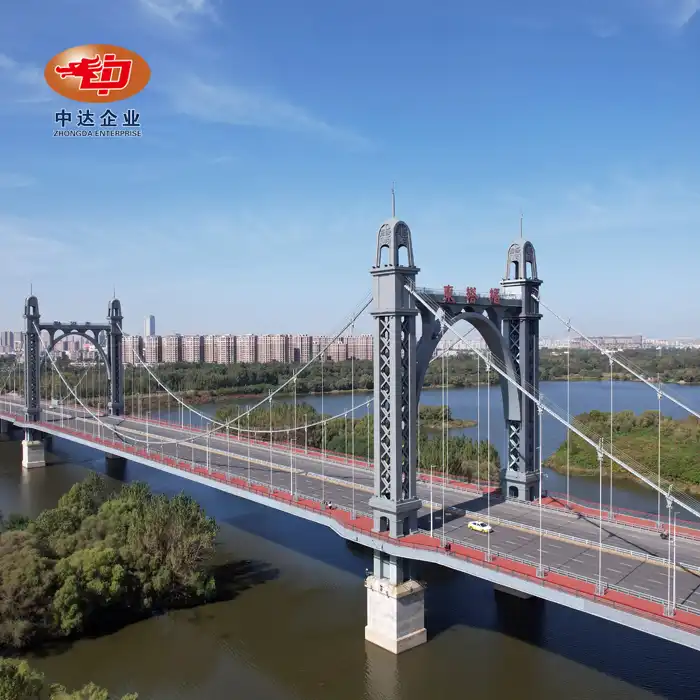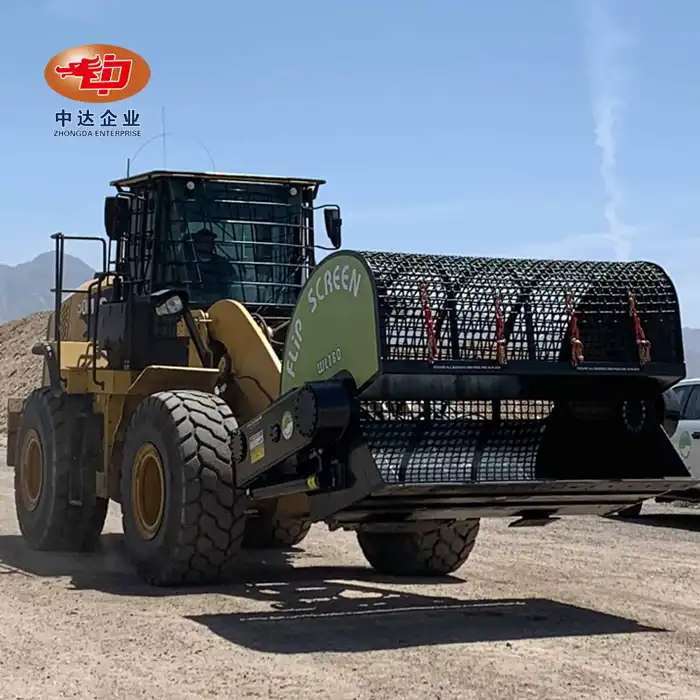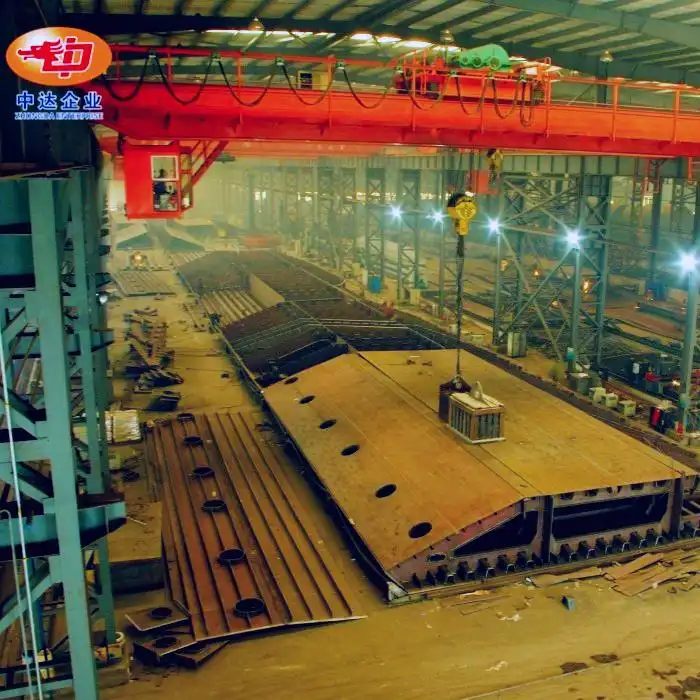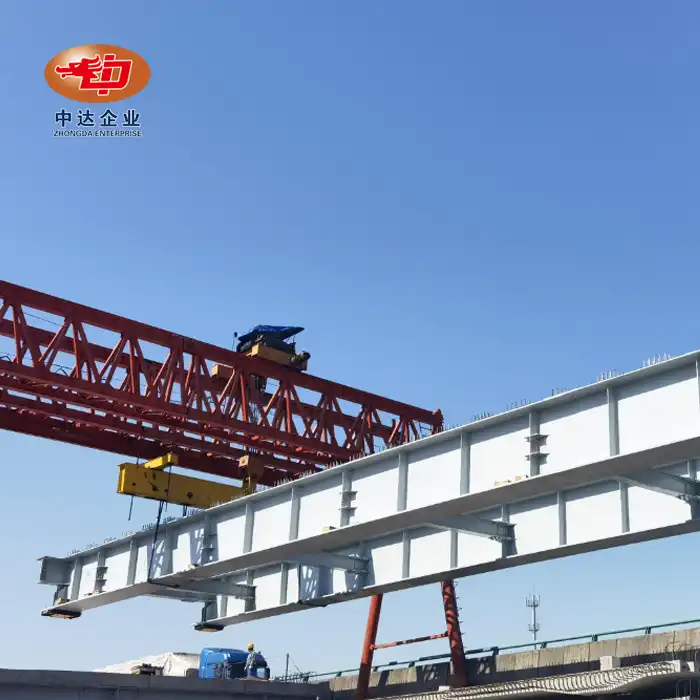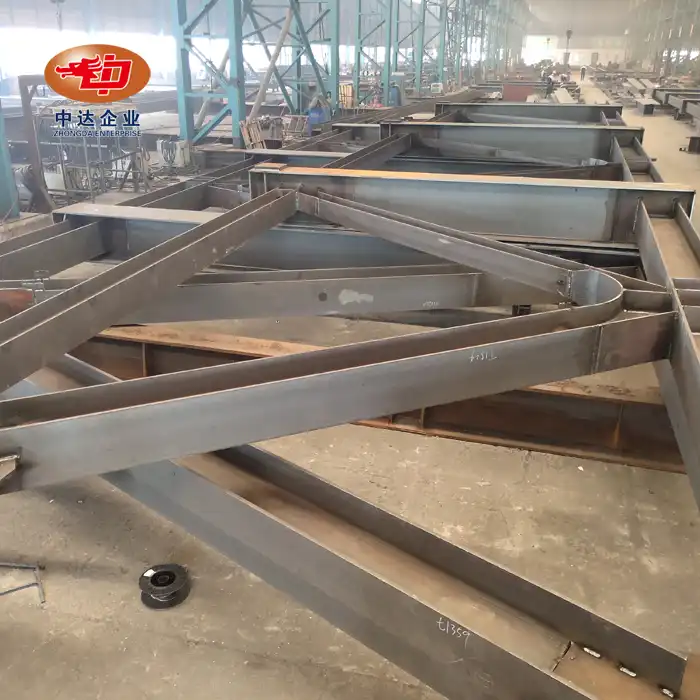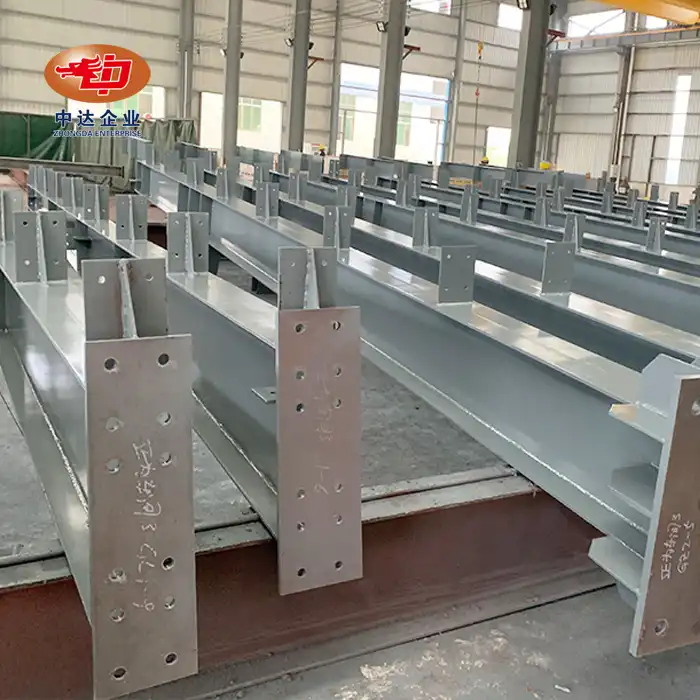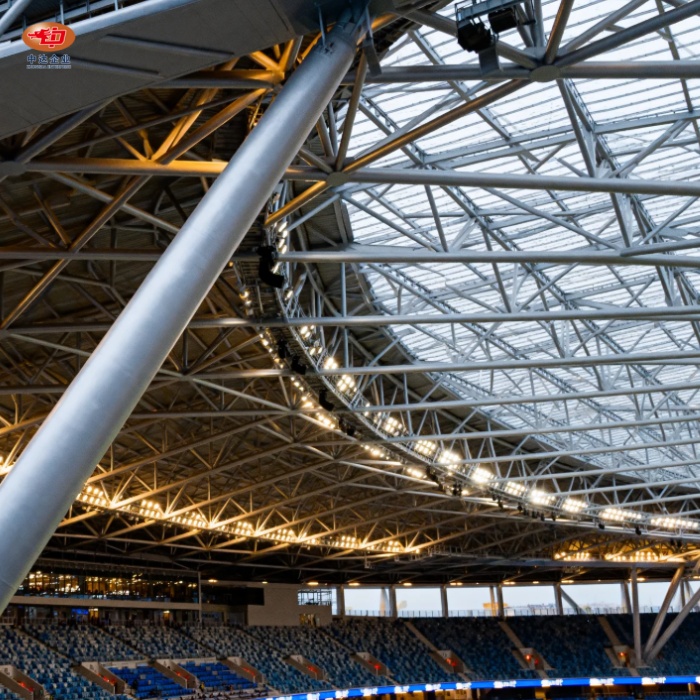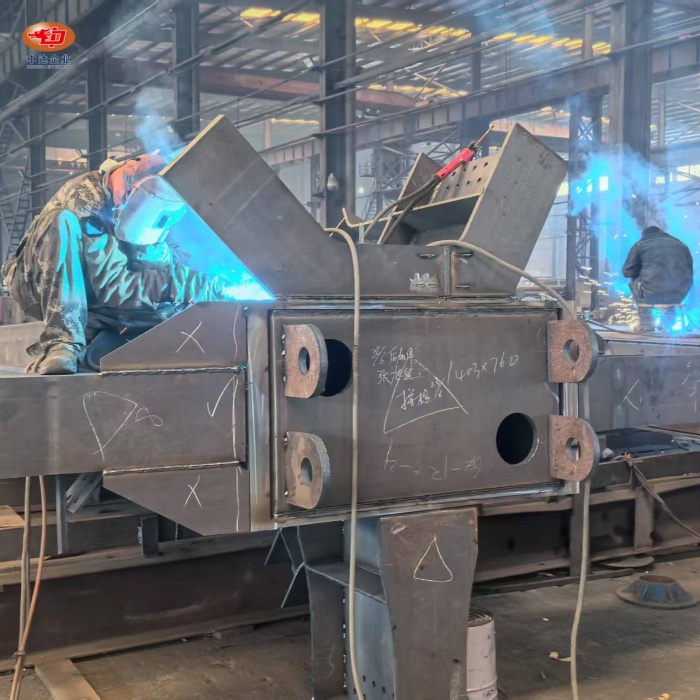
Difference Between Steel Concrete Composite Beam and Pure Steel Beam
When it comes to structural engineering, the choice between steel concrete composite beams and pure steel beams can significantly impact a project's success. Steel concrete composite beams combine the strength of structural steel with the durability of reinforced concrete, offering a unique solution that outperforms pure steel beams in many aspects. These innovative components, featuring high-strength Q345D steel and C50 grade concrete, provide exceptional load-bearing capacity, improved fire resistance, and cost-effectiveness. As a leading manufacturer, Shenyang Zhongda Steel Structure Engineering Co., Ltd. specializes in crafting superior steel concrete composite beams that meet the most demanding project requirements.
Structural Efficiency and Load-Bearing Capacity
Enhanced Strength-to-Weight Ratio
Steel concrete composite beams offer a significant advantage over pure steel beams in terms of strength-to-weight ratio. By combining the compressive strength of concrete with the tensile strength of steel, these beams achieve superior load-bearing capacity without excessive weight. This synergy allows for longer spans and reduced overall structural weight, making them ideal for bridges, high-rise buildings, and other large-scale projects.
Improved Stiffness and Deflection Control
The composite action between steel and concrete results in increased stiffness compared to pure steel beams. This enhanced rigidity translates to better deflection control, reducing the likelihood of sagging or excessive movement under load. For projects requiring strict deflection limits, such as long-span bridges or floors in commercial buildings, steel concrete composite beams offer a clear advantage.
Optimized Material Usage
Steel concrete composite beams allow for more efficient use of materials. The concrete slab effectively increases the compression flange area of the beam, reducing the amount of steel required in the top flange. This optimization not only saves on material costs but also contributes to a more sustainable construction approach. At Zhongda Steel, we leverage our expertise to design composite beams that maximize material efficiency without compromising structural integrity.
Fire Resistance and Durability
Superior Fire Performance
One of the most significant advantages of steel concrete composite beams over pure steel beams is their enhanced fire resistance. The concrete encasement acts as a protective layer, shielding the steel from direct exposure to high temperatures. This feature can significantly increase the fire rating of a structure, potentially reducing or eliminating the need for additional fire protection measures. Our composite beams, utilizing C50 grade concrete, provide exceptional fire resistance, ensuring the safety and longevity of your structures.
Improved Corrosion Resistance
While pure steel beams are susceptible to corrosion, especially in harsh environments, steel concrete composite beams offer improved protection. The concrete cover helps shield the steel from corrosive agents, extending the lifespan of the structural element. Additionally, at Zhongda Steel, we offer specialized anti-corrosion treatments such as galvanizing or epoxy coating for the exposed steel surfaces, further enhancing durability.
Enhanced Vibration Control
The added mass and damping properties of concrete in composite beams contribute to superior vibration control compared to pure steel beams. This characteristic is particularly beneficial in structures sensitive to vibrations, such as pedestrian bridges or floors in buildings with vibration-sensitive equipment. Our engineering team at Zhongda Steel can design composite beams tailored to meet specific vibration criteria, ensuring occupant comfort and equipment functionality.
Design Flexibility and Construction Efficiency
Increased Span Capabilities
Steel concrete composite beams allow for longer spans than pure steel beams of similar depth. This increased span capability opens up new possibilities in architectural design, enabling more open, column-free spaces. At Zhongda Steel, we offer customizable spans ranging from 30 to 60 meters, with the potential to reach up to 120 meters for special projects, subject to approval. This flexibility allows designers to create more versatile and aesthetically pleasing structures.
Reduced Floor Depth
Composite beams often result in shallower floor depths compared to pure steel beam solutions. This reduction in overall floor thickness can lead to significant savings in building height, potentially allowing for additional floors within the same overall building envelope. For multi-story structures, this advantage can translate into substantial economic benefits. Our engineering team at Zhongda Steel specializes in optimizing composite beam designs to minimize floor depth while maintaining structural integrity.
Streamlined Construction Process
While pure steel beams offer rapid erection times, steel concrete composite beams provide a balance between speed and structural efficiency. The steel beam component can be quickly erected, allowing for fast progress on site. The concrete slab can then be cast in place, creating the composite action. At Zhongda Steel, we've refined our manufacturing process to ensure timely delivery, with standard production times of 45 days and expedited options for urgent projects. Our prefabrication capabilities and precision engineering contribute to smoother on-site assembly and reduced overall construction time.

Conclusion
Steel concrete composite beams offer numerous advantages over pure steel beams, including enhanced structural efficiency, superior fire resistance, and greater design flexibility. These innovative structural elements, when expertly engineered and manufactured, can significantly improve project outcomes in terms of performance, cost-effectiveness, and sustainability. As a leading supplier of steel concrete composite beams, Shenyang Zhongda Steel Structure Engineering Co., Ltd. combines cutting-edge technology with unparalleled expertise to deliver solutions that meet the most demanding project requirements.
FAQs
What is the typical span range for steel concrete composite beams?
Our standard spans range from 30 to 60 meters, with the possibility of extending up to 120 meters for specialized projects, subject to approval.
How do steel concrete composite beams perform in seismic conditions?
Our composite beams have passed 8-degree earthquake simulation tests and are Caltrans compliant, ensuring excellent seismic performance.
What certifications do your steel concrete composite beams have?
Our products are certified to EN1090-2 EXC3 standards and come with comprehensive UT reports, guaranteeing their quality and reliability.
Choose Zhongda Steel for Your Composite Beam Needs
As a premier steel concrete composite beam manufacturer, Zhongda Steel offers unparalleled expertise in design, fabrication, and installation. Our state-of-the-art 120,000 m2 facility, equipped with CNC technology and automated welding lines, ensures precision and efficiency in every product. With a proven track record of over 60 landmark projects and a 70% client retention rate, we're committed to delivering innovative, high-quality solutions that meet your specific project needs. For inquiries, contact us at Ava@zd-steels.com.
References
Johnson, R.P. (2018). Composite Structures of Steel and Concrete: Beams, Slabs, Columns and Frames for Buildings. Wiley-Blackwell.
Nie, J., et al. (2020). "Advances in Steel-Concrete Composite Structures." Journal of Structural Engineering, 146(6).
American Institute of Steel Construction. (2016). Specification for Structural Steel Buildings (ANSI/AISC 360-16).
European Committee for Standardization. (2004). Eurocode 4: Design of composite steel and concrete structures.
Lam, D., & El-Lobody, E. (2005). "Behavior of Headed Stud Shear Connectors in Composite Beam." Journal of Structural Engineering, 131(1), 96-107.
Ranzi, G., & Zona, A. (2007). "A Steel–Concrete Composite Beam Model with Partial Interaction Including the Shear Deformability of the Steel Component." Engineering Structures, 29(11), 3026-3041.
YOU MAY LIKE












